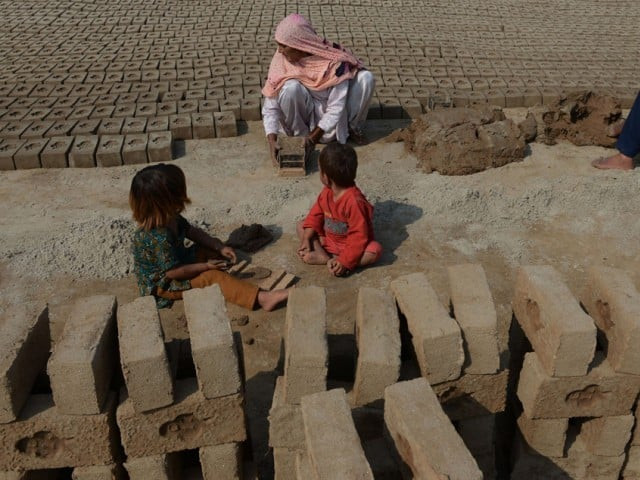Our country’s forgotten half
Urgent need for female empowerment to benefit economic growth

PHOTO: AFP
The McKinsey Global Institute, in its recent report, estimated that South Asia (excluding India) has the potential to increase its gross domestic product (GDP) by 43% if women’s participation in the economy becomes equal to men.
This includes Afghanistan, Bangladesh, Sri Lanka, Nepal, Bhutan and Maldives and most importantly, Pakistan. To put this in context, this increase for Pakistan is more than two times its current external debt, almost 16 times its federal development budget and almost 120 times the federal health and education budget combined.
However, this potential will not be realised without making critical changes. The report argues that there are three key elements in achieving the full potential of women in the workforce; gender equality in society, a shift in attitudes and economic development; in particular improving female education.
Attitudes and gender inequality
Every year, over 1 million girls are not born due to sex-selective abortions in the world. It is estimated that the number in Pakistan is around 100,000, nearly 10%, far higher than Pakistan’s share of the global population of 2.6%.
Attitudes need to change to address this problem as it can create long-term gender imbalances, something China is currently struggling with.
Read: Women by Women fair opens in Sialkot
Another area where attitudes in Pakistan need to shift is early marriages. Almost 26% of girls aged 15-19 in Pakistan along with other countries in South Asia are married, this creates a severe impediment towards their education and contribution to the economy.
Violence against women is an issue which is often swept under the carpet; at least 160 women were victims of acid attacks in 2014 and charities believe the unrecorded number is a lot higher.
Female education
One of the most significant aspects of economic development that improves female participation in the work force is education. Many studies have shown the direct and in-direct benefits of female literacy, it is arguably the most significant factor in reducing fertility.
Given Pakistan’s population crisis, this is extremely important .The Financial Times article last year titled, “Population, not politics, threatens Pakistan”, articulates this well. If fertility rates do not decline, Pakistan’s population could rise to 395 million by 2050, exacerbating the already severe problems of water and energy shortages and youth unemployment.
Female Youth Literacy (aged 15 - 24) is 64% in Pakistan compared to 82% in India and 83% in Bangladesh. Even Rwanda, which had a civil war through much of the 1990s and a refugee crisis involving over 2 million people, has a better Female Youth Literacy rate of 83%.
The McKinsey report highlights that Pakistan has nearly 16 million women with unmet family planning needs, this is a shocking 21% of the global total.
This is one of the biggest failures of Pakistan since independence. Countries such as Iran and Bangladesh, despite being conservative, have made significant headway in this area.
In Iran, family planning sessions are mandatory before a marriage licence can be issued. In Bangladesh, the state has actively made female education a long term priority despite political instability and changing governments.
Pakistan an outlier
As countries become richer, gender equality improves and this trend is seen in most countries. However, Pakistan along with some other countries is an outlier.
McKinsey’s report suggests that countries with lower GDP per capita including Uganda, Zimbabwe and Ethiopia have better gender parity than Pakistan.
Read: Political participation: ‘Women better at handling local governments than men’
Pakistan ranks among the lowest in the world in terms of the gender parity score, which incorporates multiple factors such as female labour participation, education level, political representation, violence against women and unmet family planning needs.
State’s responsibility
It is true that to some extent Pakistan lagging behind other countries is down to social attitudes and terrorist activities that have targeted female education.
However, this is not enough to absolve the state of its responsibility. One of the major reasons why there has been limited progress is the short-term vision of governments. While Metro buses and economic corridors will be built by the next elections, the positive benefits for investing in female education will not be realised until another 10 or 20 years.
Pakistan must learn lessons from its neighbours and act now, as there is great potential that has not even been looked at.
THE WRITER IS A LONDON SCHOOL OF ECONOMICS GRADUATE AND IS CURRENTLY WORKING AS A BANKER IN THE UK
Published in The Express Tribune, October 5th, 2015.
Like Business on Facebook, follow @TribuneBiz on Twitter to stay informed and join in the conversation.



















COMMENTS
Comments are moderated and generally will be posted if they are on-topic and not abusive.
For more information, please see our Comments FAQ